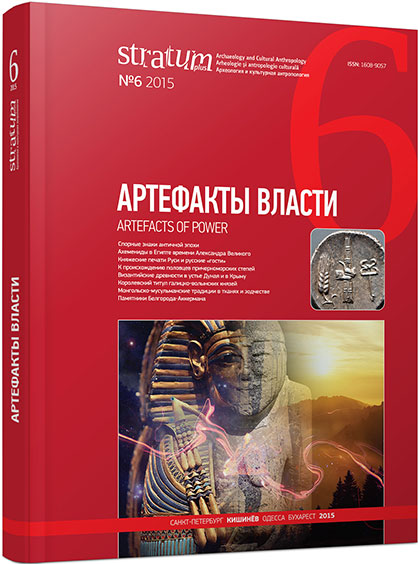Золотой шатер и шатры из золотых тканей: монгольские символы власти в кочевой и мусульманской традиции
The Golden Tent and Tents from the Golden Textiles: Mongol Symbols of Power in the Nomadic and Islamic Traditions
Author(s): Zvezdana V. DodeSubject(s): History, Archaeology, Cultural history, History of ideas, Political history, Middle Ages, 13th to 14th Centuries
Published by: Издательский дом Stratum, Университет «Высшая антропологическая школа»
Keywords: Mongol Empire; Ilkhanate; Golden Horde; symbols of power; Muslim culture; nomads; tents; Golden Tent; archaeological textiles; panni tartaric
Summary/Abstract: The subject matter of the article are the ‘golden tent’ and tents from the golden textiles depicted in the medieval written sources as the symbols of power of the Mongol khans. Having analysed the reports of the direct observers as well as those of the medieval Muslim historians, the author concludes that these terms were used not so much to describe different objects as to designate two different ideologemes reflecting the nomadic and islamic pragmatics. The Mongol ‘Golden Tent’ is a historical element of the nomadic culture, it served as a symbol of political power, and it marked time and place of important state events. Tents from the golden textiles is a metaphor of power and the divine nature of the Mongol rulers of Persia, that was artificially created by the Persian historians of the Mongol Hulagu dynasty.
Journal: Stratum plus. Археология и культурная антропология
- Issue Year: 2015
- Issue No: 6
- Page Range: 63-77
- Page Count: 15
- Language: Russian
- Content File-PDF

